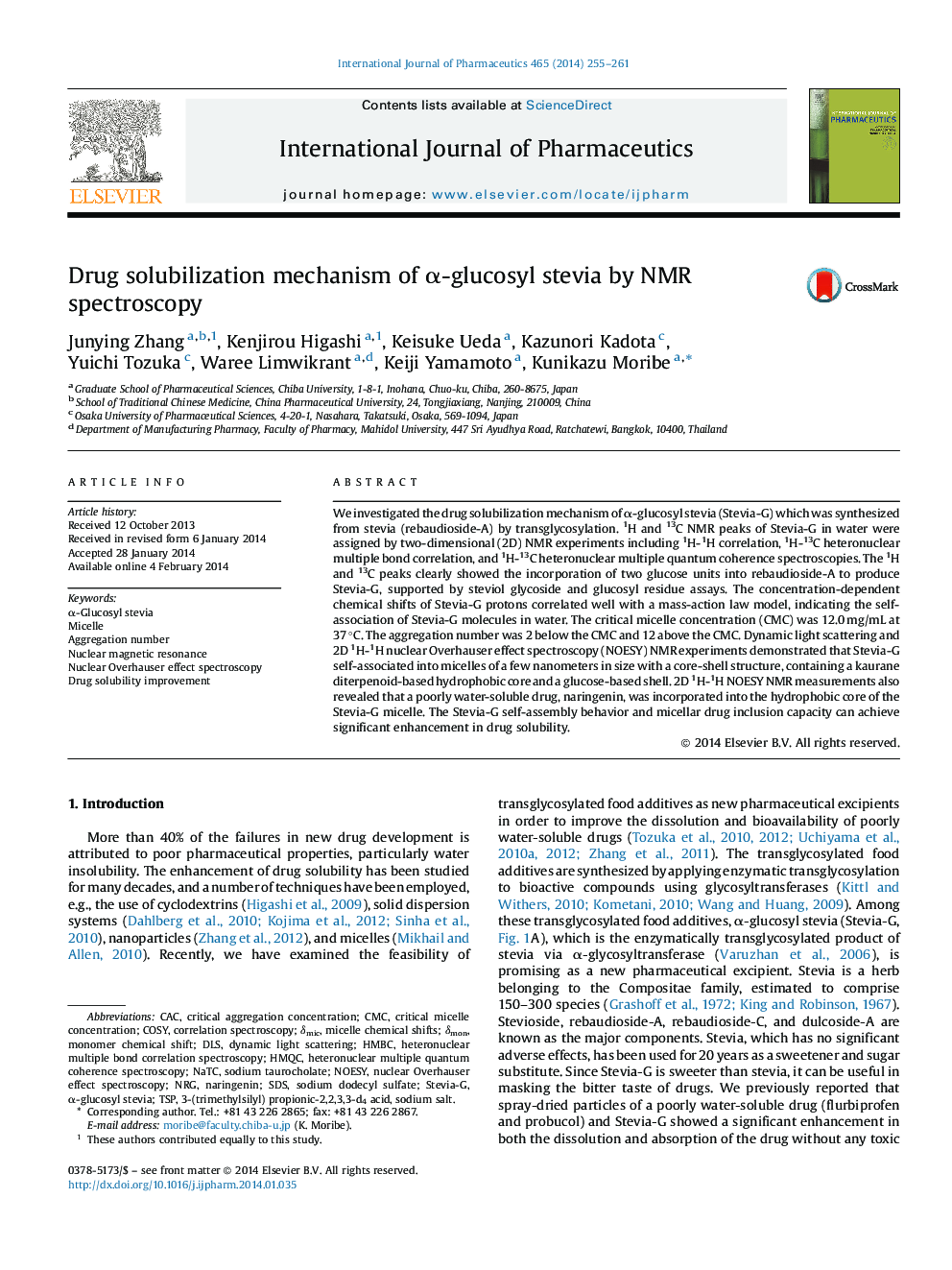| Article ID | Journal | Published Year | Pages | File Type |
|---|---|---|---|---|
| 5819660 | International Journal of Pharmaceutics | 2014 | 7 Pages |
We investigated the drug solubilization mechanism of α-glucosyl stevia (Stevia-G) which was synthesized from stevia (rebaudioside-A) by transglycosylation. 1H and 13C NMR peaks of Stevia-G in water were assigned by two-dimensional (2D) NMR experiments including 1H-1H correlation, 1H-13C heteronuclear multiple bond correlation, and 1H-13C heteronuclear multiple quantum coherence spectroscopies. The 1H and 13C peaks clearly showed the incorporation of two glucose units into rebaudioside-A to produce Stevia-G, supported by steviol glycoside and glucosyl residue assays. The concentration-dependent chemical shifts of Stevia-G protons correlated well with a mass-action law model, indicating the self-association of Stevia-G molecules in water. The critical micelle concentration (CMC) was 12.0 mg/mL at 37 °C. The aggregation number was 2 below the CMC and 12 above the CMC. Dynamic light scattering and 2D 1H-1H nuclear Overhauser effect spectroscopy (NOESY) NMR experiments demonstrated that Stevia-G self-associated into micelles of a few nanometers in size with a core-shell structure, containing a kaurane diterpenoid-based hydrophobic core and a glucose-based shell. 2D 1H-1H NOESY NMR measurements also revealed that a poorly water-soluble drug, naringenin, was incorporated into the hydrophobic core of the Stevia-G micelle. The Stevia-G self-assembly behavior and micellar drug inclusion capacity can achieve significant enhancement in drug solubility.
Graphical abstractDownload high-res image (267KB)Download full-size image
